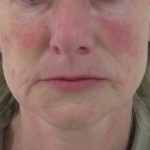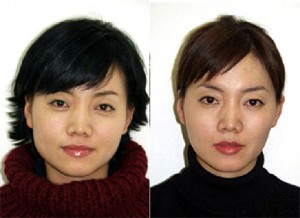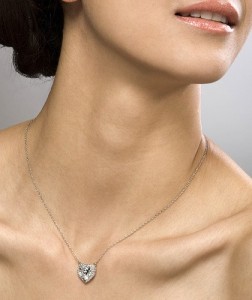Dr Vidal is informing his patients that consultations are available at the 10 Harley Street W1G 9PF London.
The 10 Harley Street has a solid COVID-19 policy in place. Masks and hand sanitizers are available. Social distancing is respected.
You can read the 10 Harley Street COVID-19 Update here:
https://www.tenharleystreet.co.uk/wp-content/uploads/2020/05/8-10-12-Harley-Street-Coronavirus-Update-11-05-2020.pdf
To book an appointment please use the contact form on Dr Vidal website.
Profhilo a new facial filler for rejuvenation and skin tightening
Profhilo is a new facial filler which is in fact used for skin tightening and tissue remodeling.
Like a traditional facial filler Profhilo is made of Hyaluronic acid (HA). But unlike traditional fillers it is a highly purified natural hyaluronic acid which does not contains chemicals to stabilise the product. Instead it is an hybrid complex formed with a high molecular weight HA combined with a low molecular weight HA.

What is the difference with classic facial fillers ?
It is not a cross-linked product like Restylane or Juvederm and does not work exactly like a “volumiser” filler.
Profhilo stimulates the collagen and elastin of the skin. This is why it is unique as a bio-remodeling agent. Its clinical effects have been described as “plumping effect, lifting effect, soft tissue treatment or skin tightening”.
The hybrid nature of this “facial filler” results in a slow and long lasting release of a natural HA (hyaluronic acid). The effects on the skin combine a “Hydro” effect ( hydration) and a “lift” effect (collagen and elastin production).
Where does Profilho sit in the facial filler anti ageing arsenal ?
Profhilo does not produce volume like Sculptra (another collagen stimulator) or your usual facial filler but it allows to very safely rejuvenate difficult areas such as the neck, the forehead or even the hands with minimal side effects. Due to its very nature Profhilo will easily distribute itself and spread through the tissues without causing any bumps or unevenness.
The neck and the forehead are tricky areas not accessible with a strong product like Sculptra and are very difficult to address with classic facial fillers because of the risk of visible long lasting bumps and unevenness very high in these areas.
Profhilo will simply flow through the tissues and activate a long lasting bio remodeling process at a superficial level in the dermis .
Of course you can get very good skin tightening and bio remodeling with deep peels such as TCA peels or Phenol peels. You can also use lasers for skin resurfacing.
But these techniques are very aggressive with a lot of downtime and much higher risks such as bad scarring or hyper-pigmentation. They are certainly not cheaper either. These reasons make Profhilo a very simple, safe and elegant way to address skin laxity.
How a Profhilo treatment is performed ?
Profhilo is an European product made in Italy by IBSA Labs.
The recommended protocol is two sessions 1 month apart.
Each session consists in the injection of five points called bio-aesthetic-points or “BAP”. Of course it is the job of the aesthetic doctor to determine where the optimal points should be for the best outcome.
Each injection is a small bolus of 0.2ml so 1ml is injected on each side of the face or the neck. 2ml in total. Local anesthesia is not required but can be used.
lip filler, lip enhancement, facial balance. Dr Vidal London
A lip filler can be useful for the whole facial area and not simply for the lips themselves. Sometimes lips are not correctly aligned with the chin and the nose on a profile view.

Lips are rebalanced with a lip filler. The projection improves the appearance of the chin and the nose
This can give the false impression of a chin or a nose too long or too big when in fact they are not. It’s just that the lips need a bit more projection forward.
This highlights the fact that it is really important not to be focused only on one thing but to replace each element within the whole context, an harmonious and balanced face.
This also shows that the profile view needs to be respected. Injecting to much will project the lips too far and the result will be the “duck lips” effect.
Injecting the chin or the tip of the nose can sometimes also be used for the same purpose of facial balance. For instance, restoring the volume under the chin muscle can improve the appearance of the lower lip and enhance the jaw line.
Contact form consultations booking Dr Vidal


Back to the lips themselves, you can see on the pictures above that the projection of the upper and lower lips improves the corner of the mouth and shortens the white upper lip. The projection of the lower lip shortens the chin.
We prefer to use a good Hyaluronic acid filler than can mix easily with the surrounding tissues without getting lumpy.
Lips are a good indication for injection when they lie onto a good facial support ( teeth, middle face facial volume). When this support is not good it is better to fix this problem first and plan the lip enhancement later.
Cost : 1 syringe Juvedem Smile £ 260.
Knee liposuction : sculpting and refining
Knee Liposuction
The knee is a highly important part of the silhouette and allure. Fatty knees can just be a cosmetic problem but sometimes they also may be a functional problem with poor lymphatic and veins circulation due to fat accumulation and pressure creating swelling, heaviness and discomfort. Knee liposuction can be rewarding on both aesthetic and functional issues.
The most common complaint about knees is : “I can’t wear what I want to !“. Skinny jeans, dresses, skirts, high boots… etc.
You can see on these pictures that the knee is surrounded by many small stubborn fat pockets which are impossible to get rid of just with diet and exercise. This can be seen with any patient, old, young, thin, overweight, healthy and active lifestyle or a bit lazy. No difference.
Also, these fat deposits are rarely symmetrical and this adds to the unpleasant look.
On this picture you can see a very attractive, healthy and active young woman. But she was not happy with her knees. Once the different parts and fat pockets are individualised during the examination it becomes obvious that the knee cap (the letter P area) is looking downward.
This is because the knee cap is pushed down by the fat located above.
The knee cap is also pulled down by the fibrous fat tissue located below.
As these drawings show, resculpting the knee is not such a simple thing as you have so many different elements to take in account before the treatment.
The inner knee is also a common source of concern for many patients. There too, this is seen on a slim patient. On these pictures you can see the back of the legs.

1 month after knee liposuction. Swelling. Small incisions are fading. Shape redefinition and improvement are already visible. Knee cap has started to go up. Dr Vidal. London
Knee liposuction procedure
-We perform this procedure with a local anaesthesia. The area to be treated is infiltrated with an anaesthetic solution.
-The second step is the use of a laser lipolysis device. A laser fiber is inserted into the fat layer. This will melt some fat but more importantly will prepare the area for the insertion of a liposuction cannula. Another reason for using a laser is that the skin retraction and quality will be greatly improved.
-The final step is the liposuction itself. Cannulas are small as they must work into small areas. The objective is to correct and rebalance what has been evidenced during the clinical examination and by the drawings.
And finally
With the local anaesthesia and laser technique the immediate recovery is very fast. You leave the clinic on your feet after the procedure. We recommend to take two days off because of the normal leaking from the incisions. Bruising is normal in this area and will subside in two weeks. But It will take some time to get the final result, usually 8 months. Knees are a sensitive and delicate area, you have to be patient with them. They also have the full body weight pushing on them constantly. Swelling can be important at the beginning and decreases gradually in a few months. Collagen and tissue remodeling will still getting and looking better after a year. A high quality compression garment is more than recommended at least several hours a day for a few weeks. Patients learn very quickly when they need it and when they can take it off.
When the indication is correctly examined and justified, knee liposuction is a very rewarding procedure for the patient.
Patient quality of life is greatly improved.
Dr Vidal practices at the Skin Oasis Clinic. 25-27 George Street.London W1U 3QA.
Knee liposuction costs : £ 2500-£3000 all included.
References
Aesthetic Plast Surg. 2013 Apr;37(2):246-53. doi: 10.1007/s00266-012-0027-7. Epub 2013 Jan 26.
Laser lipolysis using a 924- and 975-nm laser diode in the lower extremities
Hyperhidrosis Treatment London. How it works
Hyperhidrosis Treatment London
Hyperhidrosis is a medical term to define overactive sweating. This means sweating more than it would normally be required to regulate your body temperature. It is a very common problem and its cause is still not really well understood . While not a life threatening illness it nevertheless does severely impact people’s quality of life, confidence and even performance at work. The severity of hyperhidrosis can be very simply assessed by the Hyperhidrosis Disease Severity Scale HDSS. You can rate yourself as follow:
1 pt -My sweating is never noticeable and never interferes with my daily activities
2pts– My sweating is tolerable but sometimes interferes with my daily activities
3pts– My sweating is barely tolerable and frequently interferes with my daily activities
4pts– My sweating is intolerable and always interferes with my daily activities
A score of 3 or 4 indicates severe hyperhidrosis. A score of 1 or 2 indicates mild or moderate hyperhidrosis.
The HDSS can be used to follow the efficiency of your hyperhidrosis treatment . A 1-point improvement in HDSS score has been associated with a 50% reduction in sweat production and a 2-point improvement with an 80% reduction.
(ref: A Comprehensive Approach to the Recognition, Diagnosis, and Severity-Based Treatment of Focal Hyperhidrosis: Recommendations of the Canadian Hyperhidrosis Advisory Committee, Dermatologic Surgery, August 2007, pages 908-9230)
Botulinum Toxin (Botox) has revolutionised the treatment of this embarrassing problem. It works by blocking the release of acetylcholine which is the messenger between the nerve and the sweat gland. The gland does not receive any order. It stops working and you stop sweating.
Similar to the effect on facial wrinkles this anti-sweating effect is temporary because your body will rebuild functioning connexions between nerves and glands. This effect can last 6 to 8 months so you can relax and perform for that period of time.
Technique : quick and simple , botox is injected into the dermis,exactly as for a facial procedure. The quantity used for underarms hyperhidrosis is just higher than for the face.
Costs :
£ 500.00
Hyperhidrosis treatment london doctor:
London- Consultations- Appointments Dr Thierry Vidal . 25-27 George Street W1 London Tel: 020 7486 5134
References
- Safety and prolonged efficacy of botulinum toxin in hyperhidrosis Clin Ter. 2014; 165(6):e395-400. doi: 10.7417/CT.2014.1780. S. D’Epiro, L. Macaluso, M. Salvi, C. Luci, C. Mattozzi, F. Marzocca, V. Salvo, M. Scarnò, S. Calvieri, AG. Richetta Dermatology Clinic, ‘Sapienza’ University of Rome, Italy
- “Quality of Life in Patients with Focal Hyperhidrosis before and after Treatment with Botulinum Toxin A” Anargyros Kouris, Kalliopi Armyra, Christos Christodoulou, Polixeni Karimali, Dimitrios Karypidis, and George Kontochristopoulos, ISRN Dermatology, vol. 2014, Article ID 308650, 4 pages, 2014. doi:10.1155/2014/308650
Temple fillers techniques- Dr Vidal- London
Why using Temple Fillers ?
Hollow temples are a cardinal sign of ageing but fortunately it is easy to address this issue with temple fillers.
On the two pictures below it is easy to see that the correction with temple fillers reopen the eye by giving support to the eyebrow. Also, the shadow area has disappeared and now the temple is convex. This means a much better light reflection. The whole area looks much healthier and younger.
It is possible to use different types of fillers for the temple area:
- Fat
- Hyaluronic acid (such as Juvederm)
- Plla (Sculptra)
Fat can give good results but it is definitely not very practical to use, the harvesting and preparation is difficult and the re-injection is a bit traumatic meaning lot of swelling, bruising and downtime for the patient.
For these reasons we use either sculptra or juvederm. The choice is a question of strategy and costs.
The temple area is sometimes very hollow and deep and a large volume may be required for the correction. It is also common to have different areas ( temples, mid-face, chin) to correct during the same session. For these patients we recommend to use Sculptra because it will allow more work than a simple syringe of juvederm.
On the other hand, when the volume needed is not very important and when more superficial work is needed ( to lift the eyebrow for instance) we will recommend a Juvederm filler such as Voluma or Volift.
A topical anaesthesia with Emla cream is used for a better comfort, less bleeding and a more precise correction.
Dr Thierry Vidal.
Aesthetic and Cosmetic Doctor. Marylebone London.
Consultations and enquiries at Skin Oasis Clinic 25-27 George Street. W1U 3QA London
Cheek Filler, Volume Filler, Facial Filler, What to choose ?
Cheek filler, Volume filler ?
Plenty of fillers are available, cheek filler, lip filler, sculptra, voluma, implants, fat transfer, the list is endless.
Loss of volume is one of the first signs of the facial ageing process. It can happen anywhere, cheek, temple, under eye area giving a tired, sagging aspect of the face. The correction of this loss of volume requires some experience from the practitioner. Not only you have to use the right product but you also have to inject it at the right location.
As you can see on this picture the volume loss is quite global but a patient like this one will typically complain about her nasolabial folds (nose to mouth folds) and ask her doctor to inject these ugly deep folds with a filler.
Doing so would be mistake and give an unnatural result because the volume would be added where it is not needed. These folds the patient is complaining about are deeper and more visible because the loss of volume has occurred above them, in the midface. There is no more support for the skin and the midface simply falls down. The volume correction should therefore been performed there.
What kind of cheek filler ?
In this case, the loss of volume is important. It would require a very large amount of usual hyaluronic acid fillers ( juvederm voluma, restylane etc..) to achieve a good correction. This would be too expensive and not very healthy as a filler is nothing else than a thick gel pushing and compressing all the structures around it.
When a large volume is required we prefer to use a poly-lactic acid filler (Sculptra). It is possible to address large areas at the same time and the filler will respect the surrounding structures. Because the obtained correction is very progressive and will create plenty of new collagen fibers the result will look very natural.
Consultations Dr Vidal Skin Oasis Clinic 25-27 George Street W1U 3QA
Tel: 020 74865134
Botox even more popular in 2014
Botox and cosmetic procedures american survey
According to a study made by the American Society for Aesthetic Plastic Surgery, the number of non surgical cosmetic procedures such as Botox and fillers performed in the USA was 740.751 in 1997.
In 2012 this number was 8,416,470 !!!
Click on the link to see the chart from the ASAPS 2012- Plastic surgery timelines
Botox was by far the most popular non surgical procedure with 3,957,913 treatments performed in 2012. The second most popular was fillers (hyaluronic acid) with “only” 1,423,705 procedures performed in the US.
Click on the link to see the chart of the top 5 for surgical and non surgical cosmetic procedures 2012-top5 cosmetic procedures
The ASAPS writes :
“The most popular nonsurgical procedure was injections of Botulinum Toxin Type A (including Botox and Dysport). Cosmetic minimally-invasive procedures increased over 10 percent in the past year, with almost 8.5 million procedures in 2012. Nonsurgical procedures accounted for 83% of the total number of procedures performed representing 39% of total expenditures. The top five minimally-invasive procedures were:
- Botulinum Toxin Type A: 3,257,913
- Hyaluronic Acid: 1,423,705
- Laser Hair Removal: 883,893
- Microdermabrasion: 498,821
- Chemical Peel: 443,824
This is the second year this survey asked the doctors for the total number of non-surgical procedures being performed in their practices by BOTH physicians and their physician assistants and nurse injectors. When procedures performed by physician assistants and nurse injectors are included, the total number of cosmetic surgical and nonsurgical procedures performed in the United States in 2012 increases to 12.7 million. Below is the TOTAL number of procedures performed in the practices surveyed:
- Botulinum Toxin Type A: 4,125,179
- Hyaluronic Acid: 1,806,806
- Laser Hair Removal: 1,224,920
- Chemical Peel: 718,465
- Microdermabrasion: 672,430
The Aesthetic Society, which has collected plastic surgery procedural statistics since 1997, says the overall number of cosmetic procedures has increased 250% since the tracking of the statistics first began. “We are confident that these statistics continue to accurately report cosmetic procedure trends as performed by the physicians who are most likely to perform them,” said Dr. McCafferty, MD. “For the past 16 years, the interest in and demand for cosmetic plastic surgery has risen exponentially, a 250% increase in surgical and nonsurgical procedures, and our comprehensive statistics continue to show that.”
You can read the original publication here
jaw reduction botox
Botox really is an amazing cosmetic treatment. It is even possible to use it for a jaw reduction of volume and face lower third refinement.
The muscles of the jaw are called masseter muscles. We use them to chew, eat, bite etc. When these muscles are too developed and too strong they can make a face looking very large and squared.
An hypertrophy or hyperactivity of these muscles can also have serious medical and dental consequences such as bruxism or teeth grinding and chronic pain.
In our civilizations people associate beauty with a triangular shape (or V shape) of the face. A squared shape is perceived as masculine. Jaw reduction is extremely common in Asia but a lot occidental patients are also looking for a solution to this problem.
Before Botox the treatment for jaw reduction was surgical ( called jaw shaving). The surgeon reduces the volume of the bone by shaving it. This treatment is obviously invasive and may be risky. Botox is very easy to do, just a few injections in the jaw muscle, and has only minimal risks. The main risk of Botox jaw reduction being a temporary slight asymmetric smile.
By reducing the volume of the muscle Botox allows dramatic cosmetic results of jaw reduction like this one below. (Photograph by Dr Kyle SEO).
In 2004 Dr J. Ahn, C.Horn and A.Blitzer have published a study on the efficiency and safety or botox injections for jaw reduction with very good results. Jaw reduction Botox is a simple safe and efficient treatment.This article is very well documented and shows very good before/after pictures of jaw reduction botox. You can access this article on Botox jaw reduction by clicking.
Laser Liposuction History
Birth of liposuction
Liposuction is still a relatively young procedure. The concept has been developed in 1974 by a an Italian gynecologist Dr Giorgio Fischer and his father Dr Arpad Fischer. Their first publication was in 1976 :”Fischer A, Fischer GM. First surgical treatment for modeling body’s cellulite with three 5-mm incisions.” Bull Int Acad Cosmet Surg. 1976;3:35. It was the beginning but the key concepts were there : cannula, suction, sculpting, tunnels. They have invented liposuction.
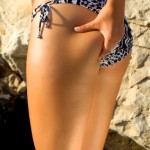 It was revolutionary but not perfect. The major problem was a very significant blood loss that sometimes would lead to fatalities. From 1977, French surgeons Dr Pierre Fournier and Dr Yves Illouz refined the technique making the liposuction less aggressive. They became very popular among their peers. In the early 1980’s surgeons from all over the world came to Paris to learn this revolutionary new technique. In 1989 Dr Fournier published his book ” Liposculpture ma technique. Paris, Arnette, 1989.” In this book liposuction pioneers including Dr Fischer himself relate the birth and development of the procedure.
It was revolutionary but not perfect. The major problem was a very significant blood loss that sometimes would lead to fatalities. From 1977, French surgeons Dr Pierre Fournier and Dr Yves Illouz refined the technique making the liposuction less aggressive. They became very popular among their peers. In the early 1980’s surgeons from all over the world came to Paris to learn this revolutionary new technique. In 1989 Dr Fournier published his book ” Liposculpture ma technique. Paris, Arnette, 1989.” In this book liposuction pioneers including Dr Fischer himself relate the birth and development of the procedure.
The second liposuction revolution
A major improvement was introduced in 1985 by an American dermatologist Dr Jeffrey Klein. Dr Klein invented the tumescent technique. This was a revolution because it became possible to perform a liposuction with a totally local anesthesia. Moreover, the blood loss was reduced to a minimal. The toxicity of the drugs was under control. The risks of a general anesthesia were eliminated. Patients were back to their normal life very quickly. Cosmetic results were greatly enhanced by the use of smaller cannulas. He made liposuction a reliable, safe and effective cosmetic procedure. It is still a gold standard today. Dr Klein has described his concepts and findings in his book “Tumescent Technique : tumescent anesthesia and microcannular liposuction. St Louis. Mosby. 2000.”
From liposuction to laser liposuction
Always in search of technological advances, practitioners became interested in the use of lasers to treat fat deposits as an alternative to liposuction. In 1992 Dr Apfelberg made the first description of a Yag laser effect on the fat tissue. Despite encouraging results, the laser did not demonstrated a significant advantage and was not developed. But at the beginning of the 21st century doctors from South America (Goldman, Schavelzon, Blugerman) started to publish studies demonstrating the effect of the laser on fat and on the skin. Dr Katz and Dr McBean from New York have related this in their very interesting 2011 article laser lipolysis : an update . Soon, an Italian company would get the FDA approval for a laser device, the world famous “Smartlipo®“.
Smartlipo was introduced in the UK in 2006. At this time, practitioners were taught to use the laser alone, without additional suction. Whilst the laser beneficial effects on speed recovery and skin tightening were obvious, it was not so good for body sculpting. Very logically, a lot of practitioners started to combine the laser and the suction giving birth to the laser liposuction.
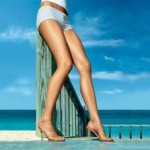 Today, laser liposuction combines the benefits of the liposuction under local anesthesia (as described by Dr Klein 27 years ago) with the specific thermal effect of the laser on the dermis and blood vessels. Lasers have also improved in speed, power, safety. The first Smartlipo has now been replaced by a second generation of laser lipo.This combination of old and new techniques allows these clinical results in a day procedure without all the risks of the traditional liposuction with general anesthesia.
Today, laser liposuction combines the benefits of the liposuction under local anesthesia (as described by Dr Klein 27 years ago) with the specific thermal effect of the laser on the dermis and blood vessels. Lasers have also improved in speed, power, safety. The first Smartlipo has now been replaced by a second generation of laser lipo.This combination of old and new techniques allows these clinical results in a day procedure without all the risks of the traditional liposuction with general anesthesia.
Botox for the neck : the famous Nefertiti Lift
Nefertiti Lift Botox
As a professional practitioner it always amazes me that I very rarely have demands about the neck. And when I have it is generally too late for a non surgical treatment such as the Nefertiti lift.
The neck is one of the most important component of the beauty and as such should be protected with the greatest care. No need to talk about the Joconde or Queen Nefertiti, it is really this extra “je ne sais quoi” that gives sex appeal and class. What would be Audrey Toutou or Brad Pitt without a distinguished, racy neckline ?
I wrote an article about the use of botox injections for Nefertiti lift to preserve the neck beauty and allure, you can read it by clicking this link
The Nefertiti lift is the technique using botox injections to relax the strongest parts of the superficial neck muscle (platysma). These parts are pulling the jaw line downward when ageing and are enlarging the lower third of the face. Relaxing them at the early stages of the process is a simple but elegant way to preserve the beauty of the neck.
Botox injections: 1, 2 or 3 areas ?
Botox injections
Botox injections are generally offered by clinics and doctors on an area basis. The most widely known are :
- the frowning area to treat the vertical lines between the eyebrows

- the forehead area with its horizontal lines above the eyebrows
- the crow’s feet area and the lines around the eyes.
So there is a price for one, two or three areas. Unfortunately you are a little bit tight on the budget so you can afford one area only… How do you make the most of it ? Simple, you need a good advice.
How these botox injections areas work ?
Facial muscles are not independent like two flats on a same floor. They interact with each other and are in balance with each other. Using botox to weaken one (by blocking the muscle contraction) will simply reinforce the others and this can have consequences. On the other hand, a good understanding of this phenomenon can help to decide which area to treat.
For example you use the forehead muscle to pull your eyebrows upward as when one expresses surprise. But your frowning muscles do exactly the opposite and pull your eyebrows downward as you do now because you read this article.
Treating your forehead with botox will make the frowning stronger and the result may be a low position of your eyebrows which might not be aesthetically pleasant. Botox injections into the frown without considering the forehead or the eyes area could give a poor result as well.
The same concept apply when you pair the forehead and the eyes area. When you smile or close your eyes you pull the tail of the brow downward.
It is perfectly possible to treat the forehead only. It depends on your age, your facial anatomy, the relative strength of each muscle. Young people with good quality muscles may do this because a little bit of botox will not have a massive impact on this muscular balance. But this doesn’t mean it is a good cosmetic result because what is better ? a flat forehead with a strong frown and a severe look or a normal forehead with a nice relaxed look ? (please remember, you just can afford one area).
It is not very different with older people as with time they develop natural muscles imbalances . Not understanding these imbalances for botox injections can result in a poor aesthetic outcome. What is better ? a flat forehead with collapsed eyebrows and microscopic eyes or a wrinkled forehead with the eyes well defined ? or nothing ? or may be something else you even didn’t think about ?
So how do I choose my botox area ?
It is the job of a good professional botox practitioner to help you understand what is going on with your face, your muscles, your expression, your personality. It is also their job to take the time to explain these things to you. Irrespective of what your budget is but relevant to how your face looks.
The most common mistake made by people is to go to a botox provider and ask firmly for a specific area to be treated. They do this because it is difficult to see themselves objectively. Chances are they will get this area treated whether or not it was the best aesthetic choice.
A good professional will do very well if you can afford three areas. A very good one could just do as well with less. If you can afford only one area please first ask your doctor what would be the best choice and listen to their explanations. You will certainly be wisely advised.
If they cannot give you a clear explanation you may consider finding another clinic. By the way repeat this process even if you can afford more than one area . You will happily make the most of your botox injections and your money.
This article was originally written by Dr Vidal and published on apparentlifestyle.com
advanced botox in London
Advanced Botox London
london doctor dr Vidal is one of the very few practitioner to offer this advanced technique of rejuvenation for the eye and eyelid area. This is an article about the eye area management and the “doe eye” technique written by Dr Thierry Vidal and published on ezinearticles.com.
The eye area (upper and lower eyelids, eyebrows, eyelashes) is one of the most important cosmetic unit of the face. The main facial muscle of this area is the orbicularis oculi muscle.
Ageing of this zone will lead to a tired aspect with a diminished eye size, a skin excess or eyelid heaviness, some wrinkles (crow’s feet) and a hollowness of the lower eyelid area.
Dr Claude le Louarn (1) has shown that one of the most important cause of the facial ageing process was the repeated facial muscles contractions leading to some fat being expelled toward an adjacent area. This is associated with an increased resting tone of the facial muscles leading to a shortening and a straightening of these muscles.
The orbicularis oculi muscle straightening and shortening with age will attract the eyebrows downward which creates a pseudo skin excess and a heavy upper eyelid.
At the lower eyelid level the repeated contractions of the orbicularis oculi will modify the fat layer and expel some fat toward the medial palpebral pocket thus creating a hollowness of the area.
As the muscular participation in this ageing process is so important, Botox (botulinum toxin A) is naturally the best way to manage and prevent the ageing of the peri-orbital area.
For the rejuvenation of the peri-orbital area we use botox by doing three to four injections laterally on the orbital part of the orbicularis muscle. Each point is 2.5 units (2ml saline in a 100 units botox vial). We also inject another point into the palpebral part of the orbicularis. This latest point is the very advanced one.
We start straight under the tail of the eyebrow. This first point is the highest. Exact injections sites are determined by asking the patient to smile. These sites follow the orbital rim curve. The last site is situated on the same vertical line than the first. This last point is located on the pars malaris of the orbicularis muscle.
The most remarkable point, the one that makes this procedure an advanced one, will be done into the palpebral, pretarsal part of the upper eyelid. This will slightly lift the lateral canthus (corner of the eye). This point has been first described by Dr Le Louarn in 2006 (2).
This point is the “doe eye” in french “oeil de biche ” injection.
1 to 2 units are injected along the eyelashes line with the needle hold horizontally. This injection is done very superficially, in a sub-dermal plan above the muscle, creating a small bubble visible at the surface of the skin. The muscle is not directly injected.
This point is done only to female patients as it enhances a feminine shape of the eye by lifting the lateral canthus (it is a “doe eye” effect).
This technique will re-open a tired eye and ease the heaviness of the upper eyelid. Eyelashes are nicely enhanced and a beautiful almond shape is accentuated.
We started to inject like this in 2006. Today, after several hundred of these palpebral injections we have not seen any adverse effect such as a ptosis, a dryness or a diplopia. Side effects are rare and limited to a minimal bruising of the upper eyelid.
To see before after pictures of this advanced botox london eye rejuvenation please click on this link
(1) Claude Le Louarn, Bathias, Buis: structural aging: The Facial Recurve Concept Aesth Plast Surg: 31: 213-218, 2007.
(2) C.Le Louarn: Botulinum toxin and the Face Recurve concept: decreasing resting tone and muscular regeneration. Ann Plast Chir Esthet. 2006;52:165-176
Dr Thierry Vidal is a cosmetic doctor practicing in London. He specializes in advanced non surgical procedures such as Botox and laser liposuction.
Article Source: ezinesarticles.com
Advanced botox london: the eye area management and the doe eye technique by Dr Thierry Vidal
New Blog
this is the site new blog. Here we will publish short articles an reviews about news and techniques
in cosmetic medicine
















